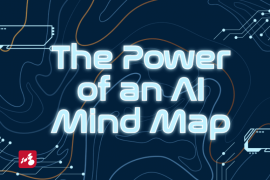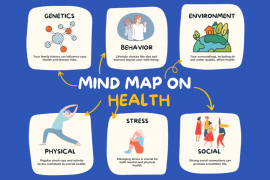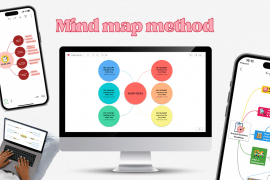For K-12, higher education, or home-schooling, mind maps are a great visual way of organizing the educational material around a subject through words, colors, pictures and numbers to illustrate concepts and identify connections.
In the academic world, mind mapping gives teachers meaningful input into the thinking process of their students on a particular subject. With mind maps, teachers can understand what the specific knowledge of students has been and how well they understood the assignment or the material they studied. For students, mind maps are especially useful in writing and provide them with a natural way of thinking and developing thoughts on any subject.
Here are 7 useful mind mapping tips that teachers can use inside and outside the classroom:
- Design your lesson plan – Preparing your lesson can be a time-consuming process. By using mind maps to plan your lessons, you can minimize all the files and notes to a clear and precise overall view that can be perfectly understood by students.
- Present your lecture – Mind mapping is a great technique for delivering lessons as it provides students with a graphic and captivating description of any subject. By including mind maps in a regular class, you will revitalize the creative spirit of students and make the course more entertaining.
- Create assignments – Just as the classroom was placed in the online space, homework and evaluation can be turned into mind map assignments. Create an assignment, share it and enable students to work independently or facilitate collaboration. By choosing different types of interaction, you will support students to strengthen their critical view and develop their analytical spirit.
- Use templates – Mind maps with predefined content and instructions are a common practice for teachers. Create a template from scratch or use one already made and fill in all the essential elements for a specific subject. Share the template with your students and encourage them to complete it with the necessary details. Mind map templates support you to enhance students’ abilities to synthesize information and to extract the essential ideas of a subject.
- Automate your teaching method – Integrate the mind mapping software in your preferred LMS tools or apps like Google Classroom or Google Drive, and take the teaching experience fully online or use the integrations with apps in addition to a face-to-face course.
- Make a flipped classroom – As an educational method that became very popular in the academic field over the last few years, blended learning is a widespread concept that combines traditional methods in the classroom and independent study to make a new, innovative method of teaching. Convert the classroom-based learning and share the educational material with mind maps before class. Use the time in the classroom to reinforce the knowledge by connecting the students and coming up with solutions.
- Assess students’ work and give feedback – With the help of mind map assignments, you can evaluate the work of students and offer them feedback in real-time. With Mindomo, you will grade students separately, by selecting each student from the list and filling in the grade in the grading box. For more clarity, the Playback mode will give you access to the students’ activity on the map.
Choose mind mapping as a teaching method in the classroom, give these features a try and tell us if you find them useful.
Keep it smart, simple and creative!
The Mindomo Team






